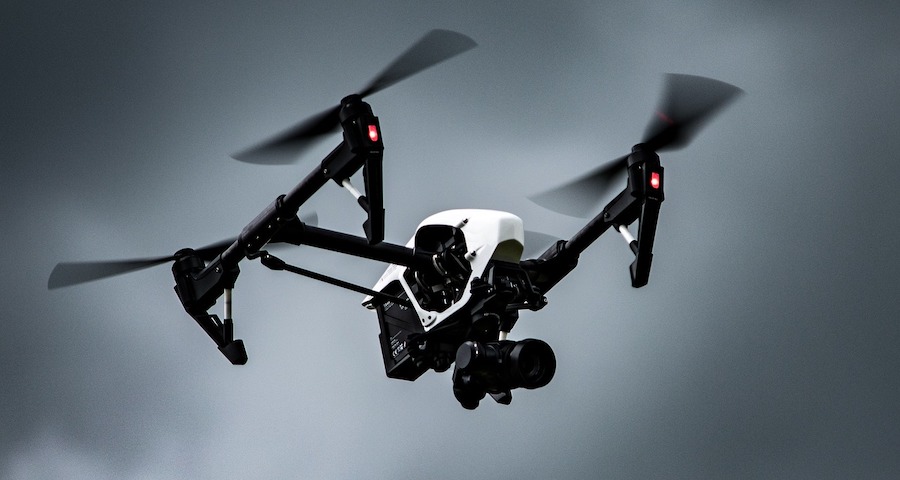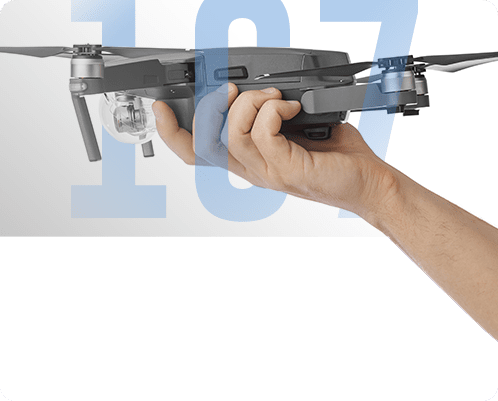-
What topics are covered in the knowledge test?
-
Aircraft Operations
- Practice Question 1
- Practice Question 2
- Practice Question 3
- Practice Question 4
- Practice Question 5
-
Regulations
- Practice Question 6
- Practice Question 7
- Practice Question 8
- Practice Question 9
- Practice Question 10
-
Airspace and requirements
- Practice Question 12
- Practice Question 13
- Practice Question 14
-
Weather
- Practice Question 16
- Practice Question 17
- Practice Question 18
- Practice Question 20
-
Loading and performance
- Practice Question 21
- Practice Question 22
- Practice Question 23
- Practice Question 24
- Practice Question 25
-
Final thoughts
The Part 107 license, the most sought-after FAA certification by drone pilots, can only be earned by passing a 60-item multiple-choice knowledge test. This test covers quite a lot of topics related to aviation. Since most people don’t have any aviation-related training, some preparation for the knowledge test will be needed if you even stand a chance of getting the passing score.
Just as important as reading up on the topics covered by the knowledge test is answering a few sample questions. This gives you a taste of how the knowledge test will proceed and will help fill in the gaps in your study session. To help those who are taking the Part 107 knowledge test, we have compiled sample questions that are representative of all the topics covered in the test.
What topics are covered in the knowledge test?
Knowing the topics you need to study and how much time you need to commit to each topic is half the battle won. Thankfully, the FAA has released a rough guide to how the topics are distributed across the knowledge test. The guide is as follows:
| Topic | % Distribution |
| Aircraft Operations | 35% to 45% |
| Regulations | 15% to 25% |
| Airspace and Requirements | 15% to 25% |
| Weather | 11% to 16% |
| Loading and Performance | 7% to 11% |
The distribution chart can be used as a rough guide to how much time you should spend studying each topic. With Aircraft Operations covering at least a third of the test, it simply makes sense to place more focus on this topic relative to the others.
Of course, this doesn’t mean that any of the other topics are less important. Even if Loading and Performance take up only about 10% of the test, all the knowledge included in this topic is considered instrumental for you to become a good drone pilot.
In any case, we have compiled the following practice questions so that you can become familiar with how the FAA administers the test. Many of these questions will require you to look at maps or sectional charts, so these questions will also serve as practice sessions for this particular skill.
Aircraft Operations
Practice Question 1

What does the latitude line at point 4 measure?
 Answer Explanation
Answer Explanation
The first answer merely provides the definition of the latitude – a measurement of the distance along the south to north axis from the equator. The second and third options on the other hand, define the longitude. Knowing the difference between the two is a basic skill in reading any kind of map.
Practice Question 2
While checking out your planned area of operations on a sectional chart, you notice that gray arrows nearby labeled “VR1667” and “VR1668.” Do these symbols represent a hazard to your operations?
 Answer Explanation
Answer Explanation
These arrows with labels that are prefixed with VR or IR are indicative of military training routes. The only difference between VR and IR is that IR routes are flown under air traffic control, while VR routes are not.
Drone pilots also need to take note of the directions of the arrows of these training routes and the number of digits of their digits. A three-digit code means that the route is above 1500 feet AGL, while a four-digit code means that it is below 1500 feet AGL. Since drones are limited to flying at 400 feet AGL or below, military training routes with four-digit codes are much more relevant. If there’s a four-digit military training route near where you are flying, you’ll need to exercise caution as military aircraft can travel at speeds beyond 250 knots leaving you little time to react.
Practice Question 3

When flying near the Mason Jewett Airport, which frequency should be used as the Common Traffic Advisory Frequency (CTAF) when scanning for air traffic activity?
 Answer Explanation
Answer Explanation
The Mason Jewett Airport is an example of an uncontrolled airport as indicated by its magenta-colored symbol. Without any air traffic control, pilots are instead expected to self-announce their position and intention whenever they approach this airport. These are broadcasted on the CTAF for that airport, which is conveniently indicated for the airport in sectional charts.
The CTAF for an uncontrolled airport can be easily found by looking for the frequency beside the magenta C symbol. In the case of the Mason Jewett Airport, the CTAF is 122.7.
Practice Question 4

You are planning to fly a drone at a spot around 4 miles north of Cochran Airport. Based on the sectional chart, what is the height of the nearest obstacle in the area?
 Answer Explanation
Answer Explanation
The obstacle north of Cochran airport is labeled by two numbers: 1568 and 1169, although the second one is enclosed by parentheses. In this type of question, all you need to know is that there are two ways for any altitude and height to be represented – either in above ground level (AGL) or mean sea level (MSL) units. Knowing which is a key component of understanding many of the symbols in sectional charts.
MSL refers to the height or altitude of any object measured from the sea level. Since the sea level is approximately the same for any point on the planet, this means that all MSL measurements are measured from a single reference. AGL measurements, on the other hand, are measured based on the level of the ground directly below the point being measured. This takes into account changes in elevation due to the terrain.
From this definition, it also follows that MSL measurements will always be higher than AGL measurements. For our example, the 1568 feet in the symbol indicate the MSL measurement while the 1169 feet indicate the AGL measurement.
Practice Question 5

Louisville Airport is an uncontrolled airport surrounded by a magenta-shaded circle in the sectional charts. What does this magenta circle indicate?
 Answer Explanation
Answer Explanation
The type of controlled airspace surrounding an airport depends on how much air traffic that the airport regularly receives. These airspace classes are also represented in the section charts in different ways. For instance, Class B airspace is indicated by a solid blue line while Class airspace is indicated by a solid magenta line.
For this question, the shaded magenta circle represents Class E airspace. Specifically, the shaded magenta border refers to Class E airspace from 700 feet. Class E airspace can also be represented by broken magenta lines (surface to 700 feet) or a shaded blue line (starting at 1200 feet above).
Regulations
Practice Question 6
You have received a job to survey an area that happens to fall within Class C airspace. Which of the following must you do before starting the operations?
 Answer Explanation
Answer Explanation
The introduction of the LAANC system has made it easier for Part 107-licensed drone pilots to secure authorization to fly in controlled airspace. This means that it’s no longer necessary to submit a waiver request that includes details on the planned operations, the anticipated risks, and the corresponding mitigating measures.
Since requests made through LAANC are consolidated by the FAA, drone pilots no longer need to get in touch with the concerned ATC of the controlled airspace. Instead, FAA will be the one to inform them of your operation details. This streamlines the process both for the FAA and for drone pilots.
Practice Question 7
According to the Part 107 rules, operations of a drone from a moving vehicle is allowed only if this condition is satisfied:
 Answer Explanation
Answer Explanation
Based on Rule 107.25, operations of a drone from a moving vehicle, whether on land or at water, is generally prohibited. The only exception is if it is done over a sparsely populated area. The FAA has no guidelines on what constitutes a “sparsely populated” area, stating only that such circumstances will be evaluated on a case-per-case basis.
Practice Question 8
What is the minimum age for a person to be eligible to receive the Part 107 remote pilot certificate?
 Answer Explanation
Answer Explanation
The correct answer is 16 years old, as stated in 107.61. This section defines the eligibility requirements for those who wish to apply for the Part 107 remote pilot certificate, including the ability to communicate in English and the applicant’s physical and mental condition.
Practice Question 9
While doing a commercial drone job, your drone gets into an accident and crashes. Which of the following outcomes are you NOT required to report to the FAA?
 Answer Explanation
Answer Explanation
Section 107.9 outlines the reporting requirements for Part 107 drone pilots. Among the events that need to be reported to the FAA within 10 days are accidents that result in serious personal injury or loss of consciousness, or property damage that costs more than $500 to repair. In our case, only option A (minor injury) is exempted from the reporting requirements.
Practice Question 10
After receiving the Part 107 remote pilot certificate, for how long does your privileges as a licensed pilot last until you need to go through recurrent training?
 Answer Explanation
Answer Explanation
While the remote pilot certificate itself has no expiration date, the privileges granted to you to operate commercially are only valid for 24 calendar months after the date on your initial written exam results. This means that you need to pass a recurrent knowledge test or go through recurrent training (if you have a Part 61 pilot certificate) before you can continue to operate your drone for profit.
Airspace and requirements
Practice Question 12

In a sectional chart, two airports are enclosed by blue broken lines, as pointed out by the blue arrows in the figure. What do these blue broken lines indicate?
 Answer Explanation
Answer Explanation
Again, it’s worth knowing how each of the different airspace classes is represented in sectional charts. In our case, the broken blue lines refer to the boundaries of Class D airspace.
In contrast to Class B and Class airspace that can have pre-determined floors, Class D airspace always starts at the surface. They usually have a ceiling of 2500 feet but can extend higher. For our example, the bracketed 36 in the center of the figure means that this patch of Class D airspace extends up to 3600 feet.
Practice Question 13

What is the floor of the Class E airspace surrounding the Garrison Municipal Airport?
 Answer Explanation
Answer Explanation
This is a question that seems straightforward at first but is actually a bit more complicated than it lets on. We should know by now that the shaded magenta circle represents Class E airspace that starts at 700 feet to 1200 feet. The problem is that those measurements are expressed in AGL, and the choices don’t offer the option for answering ‘700 feet AGL.’ In fact, all the choices are expressed in MSL.
What we can do instead is to attempt to look for the floor of the Class E airspace in MSL units. This requires getting the altitude of the ground in this area. Fortunately, that is conveniently provided by the symbol of the Garrison Municipal Airport. According to the symbol, the airport is located at an altitude of 1937 MSL.
Knowing the elevation of the ground from the mean sea level, we can compute for the floor of the Class E airspace by simply adding 700 feet to the 1937 feet ground elevation. We then arrive at the answer – 2637 feet MSL.
Practice Question 14

In the sectional chart below, what kind of airspace is enclosed by the hash-marked magenta border?
 Answer Explanation
Answer Explanation
The correct answer is Military Operations Area according to the sectional chart standards. These are areas where military training activities are being conducted or where unusual or dangerous activity has been detected. The area is also labeled with the huge “BENNING MOA” text, so it should be impossible to miss. Technically, drones are not restricted from flying in MOAs but are advised to fly with extreme caution.
Weather
Practice Question 16
According to today’s weather forecast, there will be a ceiling at 700 feet. Knowing this, up to what altitude are you allowed to fly your drone?
 Answer Explanation
Answer Explanation
In meteorology, the ‘ceiling’ refers to the altitude of the base of the clouds relative to the ground. In the case of completely clear clouds, weather forecasts can also describe the ceiling as ‘unlimited.’
Part 107 rules dictate that drone pilots maintain a clearance of 500 feet from the base of the clouds. The 500-foot buffer allows you to see make evasive maneuvers should there be any other aircraft in the area. If there’s a cloud ceiling, the 400-foot AGL limit for drone flight is superseded. Thus, the maximum allowable altitude in these particular conditions is only at 200 feet AGL.
Practice Question 17
What is the effect on the propeller efficiency of low density altitude?
 Answer Explanation
Answer Explanation
Based on our basic knowledge of how propellers work, they are more efficient in generating lift when they push denser air. For this reason, propellers are more efficient at low altitudes where the air is denser compared to higher altitudes, where the air is more “thin.”
The confusion on answering this question comes with using the term “low density altitude”. This is a meteorological term that pertains to the density of air at low altitudes. Putting it another way, the “low” qualified pertains to the altitude, and not to the air density. Keeping this in mind, the correct answer should be that low density altitude increases propeller efficiency.
Practice Question 18
What is the minimum visibility where drone operations are permitted?
 Answer Explanation
Answer Explanation
The minimum visibility is defined in Section 107.51, or the Operating limitations for small unmanned aircraft. Item C dictates that visibility of 3 statute miles must be maintained from the location of the control station. For the purpose of drone operations, visibility is defined as the distance at which prominent unlighted objects can be seen during the day and prominent lighted objects can be seen at night.

What is the wind speed and direction indicated in the TAF for Memphis International Airport (KMEM) reported at 1720Z?
 Answer Explanation
Answer Explanation
The Terminal Aerodrome Forecasts (TAF) contain a lot of information about the weather conditions in a particular airport in a highly abbreviated form. Being able to interpret a TAF could be one of the most difficult tasks for drone pilots, especially those who have no aviation experience.
For this reason, we only need to concentrate on the ‘20012KT’ term in the TAF for KMEM. Further breaking it down, the ‘200’ refers to the angle from which the wind is coming from. At 200°, the direction is best described as south-southwest (S-SW). The ‘12KT’ abbreviation then means that the wind speed is 12 knots.
Practice Question 20

How are the weather conditions at Los Angeles International Airport (KLAX) best described?
 Answer Explanation
Answer Explanation
Again, this is another question that requires us to interpret the heavily abbreviated information contained in a METAR. Putting our focus on the entry for KLAX, it would be best to interpret each of the items and choose the best answer from the choices via the process of elimination.
The entry for KLAX was released for the 12th day of the month at 18:52H (121852Z). The wind is coming from west-southwest and has a speed of 4 knots(25004KT). Visibility is at 6 statute miles. Clouds are scattered at 700 feet (SCT007) and at 25,000 feet (SCT250). The temperature is 16 °C and the dew point is 15 °C. The altimeter pressure is 29.91 Hg.
Based on our interpretation, the only valid answer is Option C.
Loading and performance
Practice Question 21
How often does the drone pilot need to inspect their drone to ensure that it is in good working condition?
 Answer Explanation
Answer Explanation
The need to do a pre-inspection every time a drone pilot flies is outlined by Advisory Circular 107-2 filed under Section 107.49. According to the text of the Advisory, the drone pilot must inspect the drone to ensure that it is in a condition that allows for safe operation before each flight.
Under the same Section, the drone pilot is also required to check that the control links between the control station and the drone are functioning properly and that everyone participating in the operations are oriented regarding emergency procedures, operational objectives, and their roles and responsibilities.
Practice Question 22
This methodology or principle is what drone pilots should exercise to anticipate potential hazards and enact preventive or mitigating measures.
 Answer Explanation
Answer Explanation
Risk Management is one of the central philosophies that drone pilots are expected to practice as a way of life. This principle is based on the concepts of situational awareness, problem recognition, and good judgment to determine the safest possible outcome. The main objective of Risk Management is to anticipate or recognize risks and to enact measures to minimize their effects or to avoid them entirely.
Practice Question 23
Which is true regarding the effect of alcohol on the human body?
Practice Question 24
This is a type of hazardous attitude characterized by wanting to do everything quickly with no due consideration of safety measures and operational objectives.
 Answer Explanation
Answer Explanation
The FAA defines hazardous attitudes that contribute to poor pilot judgment: anti-authority, impulsivity, invulnerability, machismo, and resignation. Recognition of any of these attitudes is the first step towards addressing them. The FAA also recommends “antidotes” to these attitudes in case you observe them in yourself or in your other crew members.
For this case, the description points to impulsivity, or the tendency to want to get things done quickly. This can be counteracted by internalizing the statement “Not so fast. Think first.” By stopping to think about what you are about to do, you can deliberate between different alternatives and anticipate the outcome of each one.
Practice Question 25
Which combination of atmospheric conditions will result in the most optimal propeller efficiency?
 Answer Explanation
Answer Explanation
Again, we are looking for the conditions that help the drone’s propellers generate more lift without having to consume more power from the battery. Lift depends on air density – the denser the air, the more lift a propeller generates in a single revolution. Thus, we are looking for conditions that increase air density.
Under low temperature and low density altitude conditions, the molecules in the air are packed tighter together, thus resulting in higher air density. The relationship of air density with humidity is founded on the idea that water vapor is lighter than air. This means that moist air is less dense than dry air.
Final thoughts
Did you enjoy this practice exam? Our Part 107 Made Easy course will help you ace the FAA exam. It has been used by more than 35,000 drone pilots. Our students score 93% on the exam on average and 99.8% pass on the first try.
Practice makes perfect. In the case of the Part 107 knowledge test, that statement may actually be true. With enough time spent studying and enough exercises from practice questions, any aspiring drone pilot can ace the Part 107 knowledge test.
The 25 questions we’ve compiled here, along with detailed explanations on how to arrive at the answers, is an excellent start. There is a lot more material out there, perhaps more than you need.




